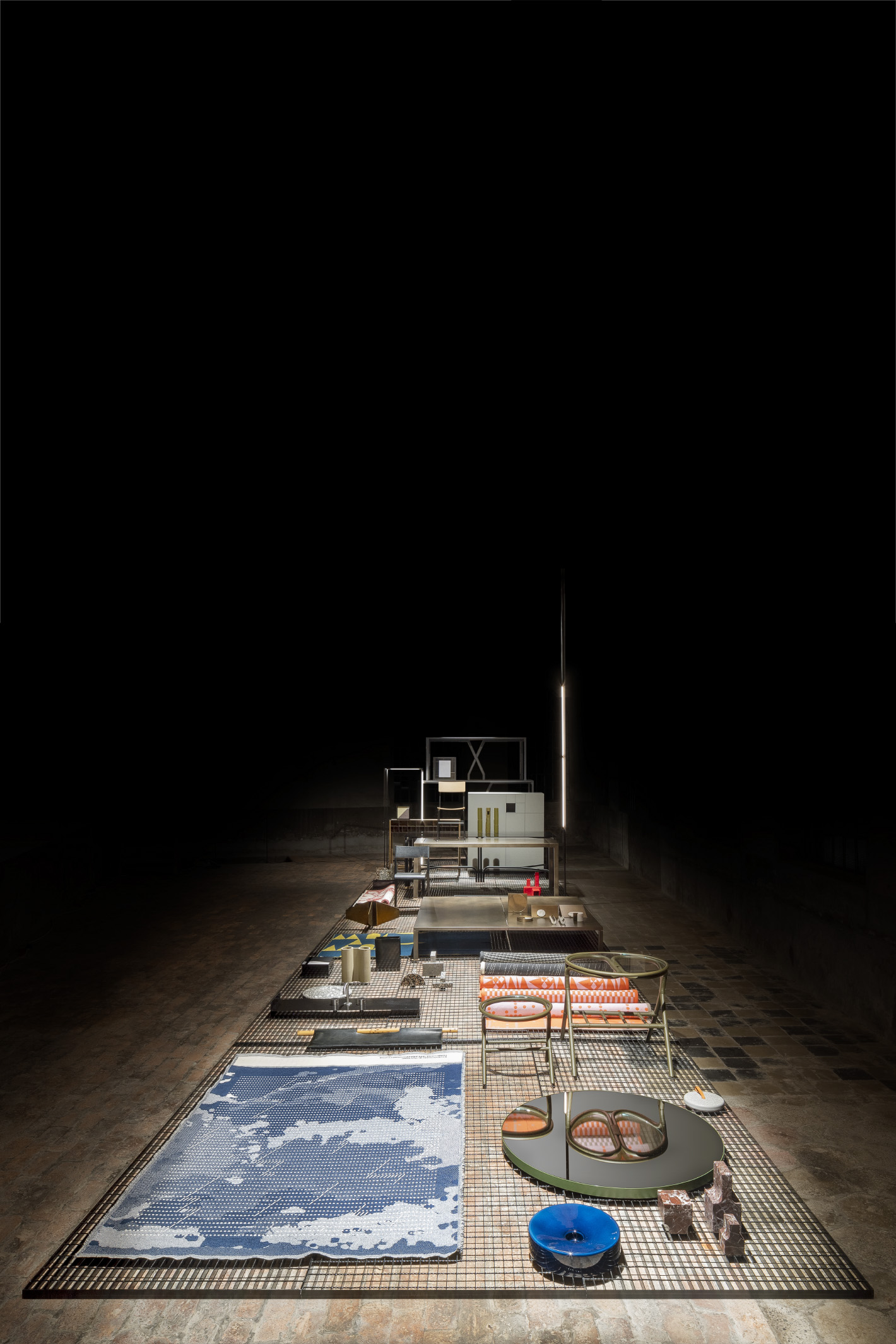
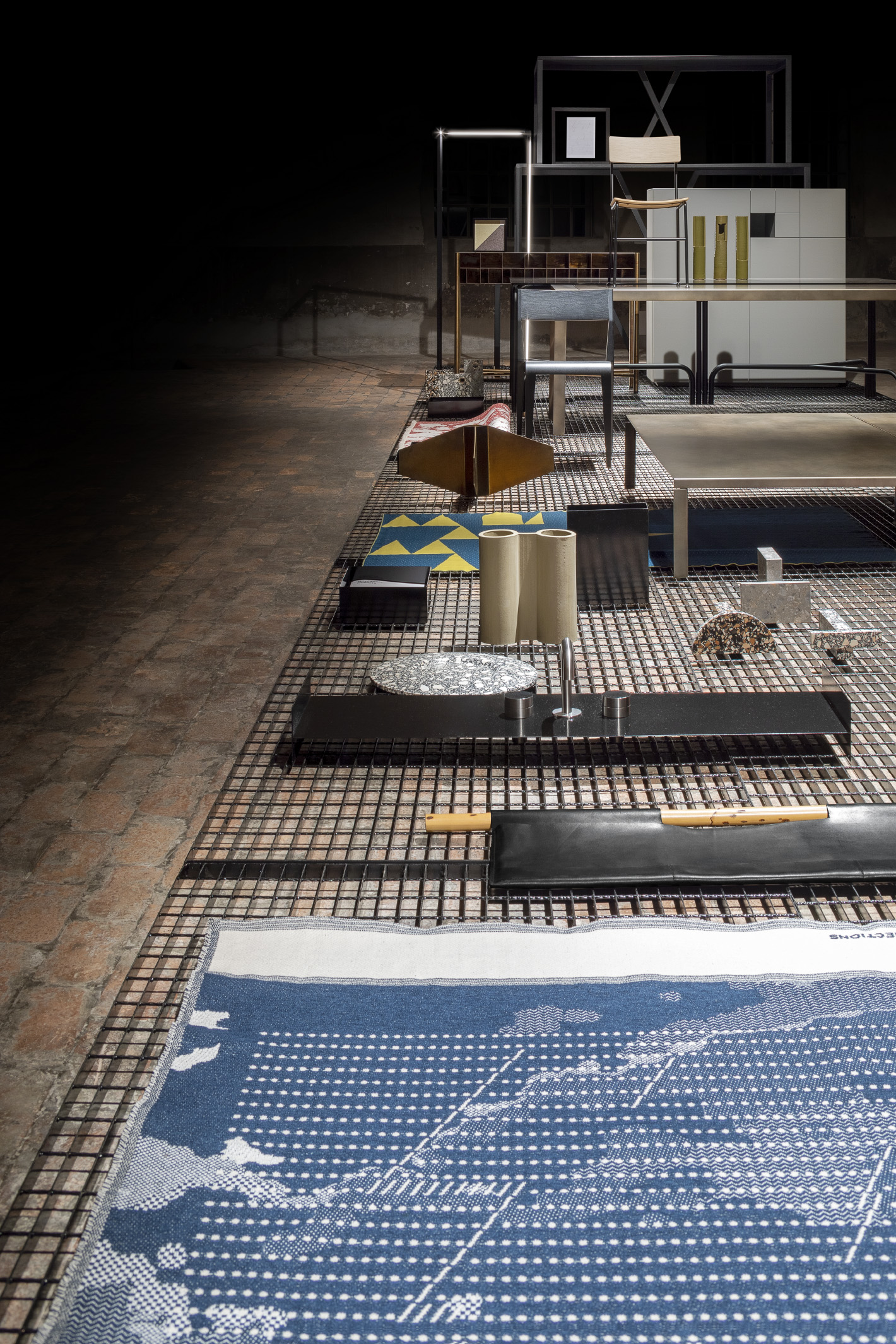
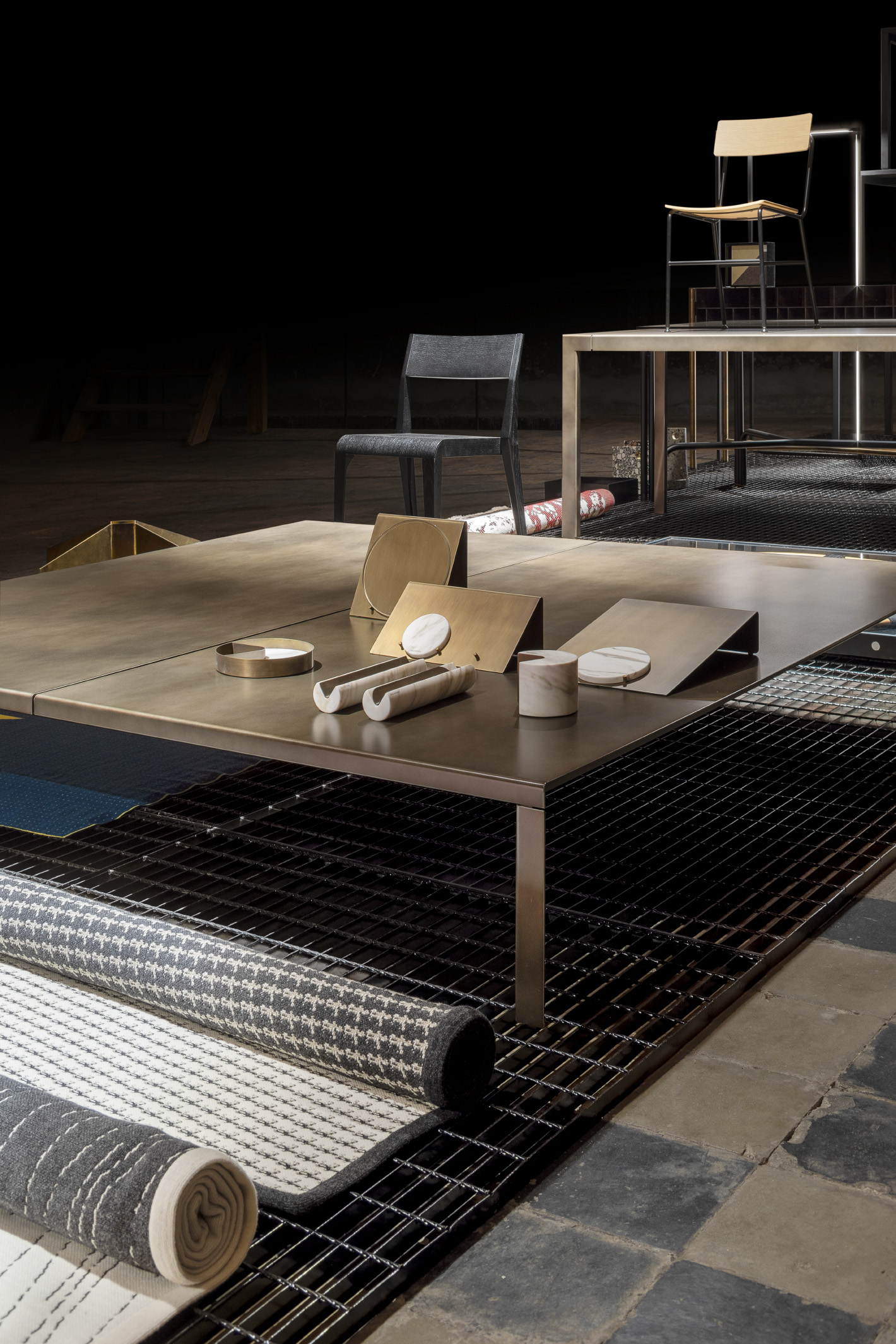
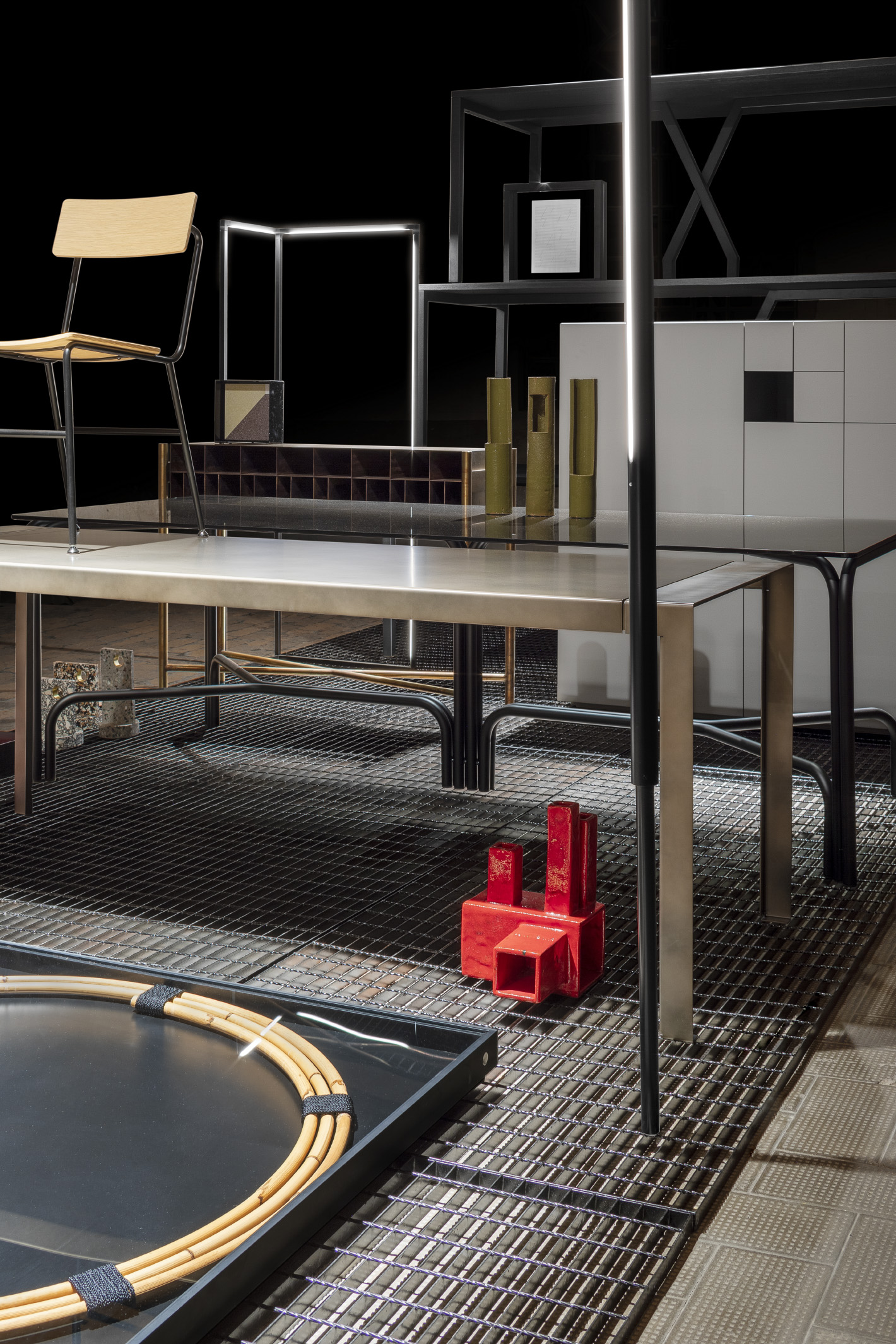
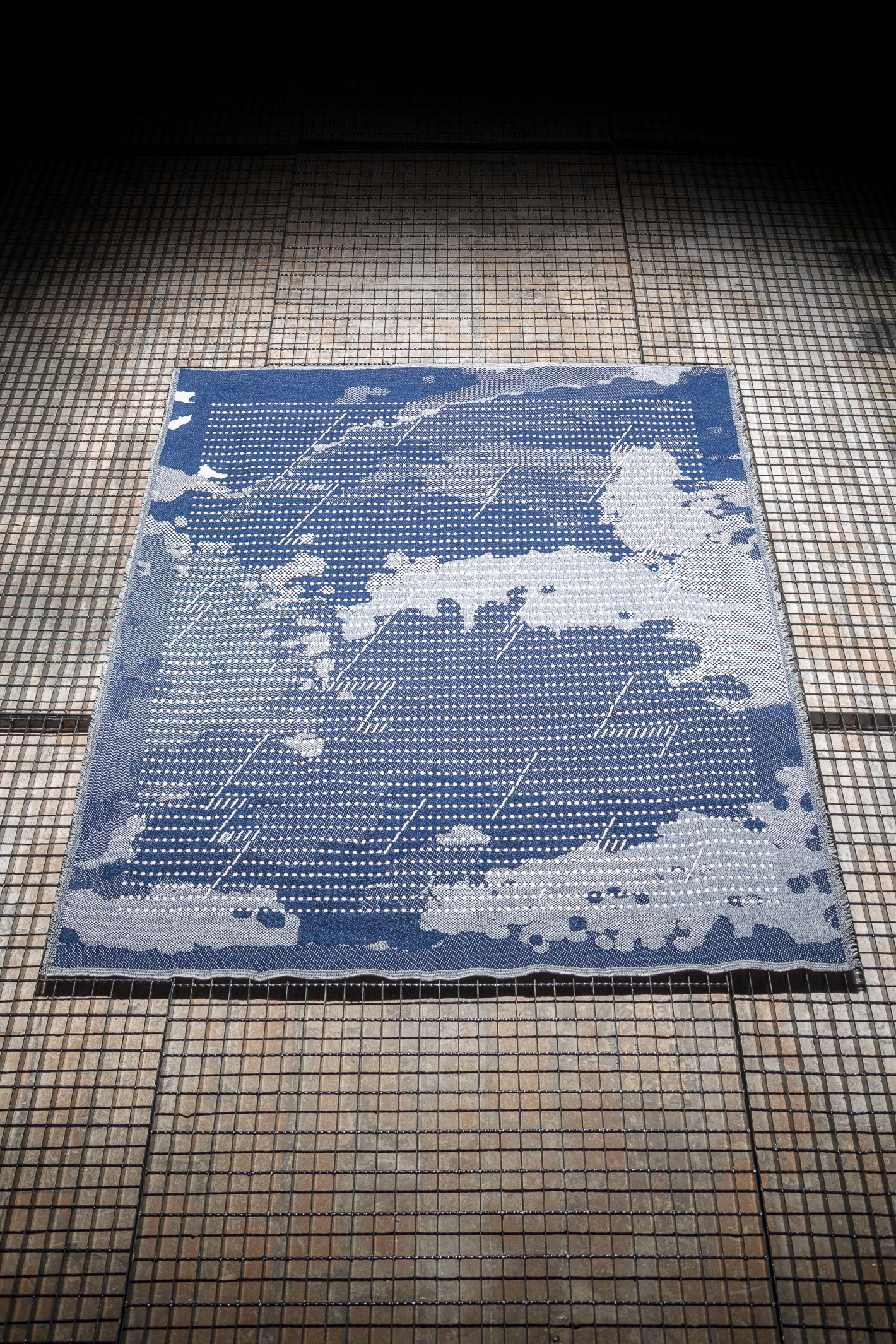
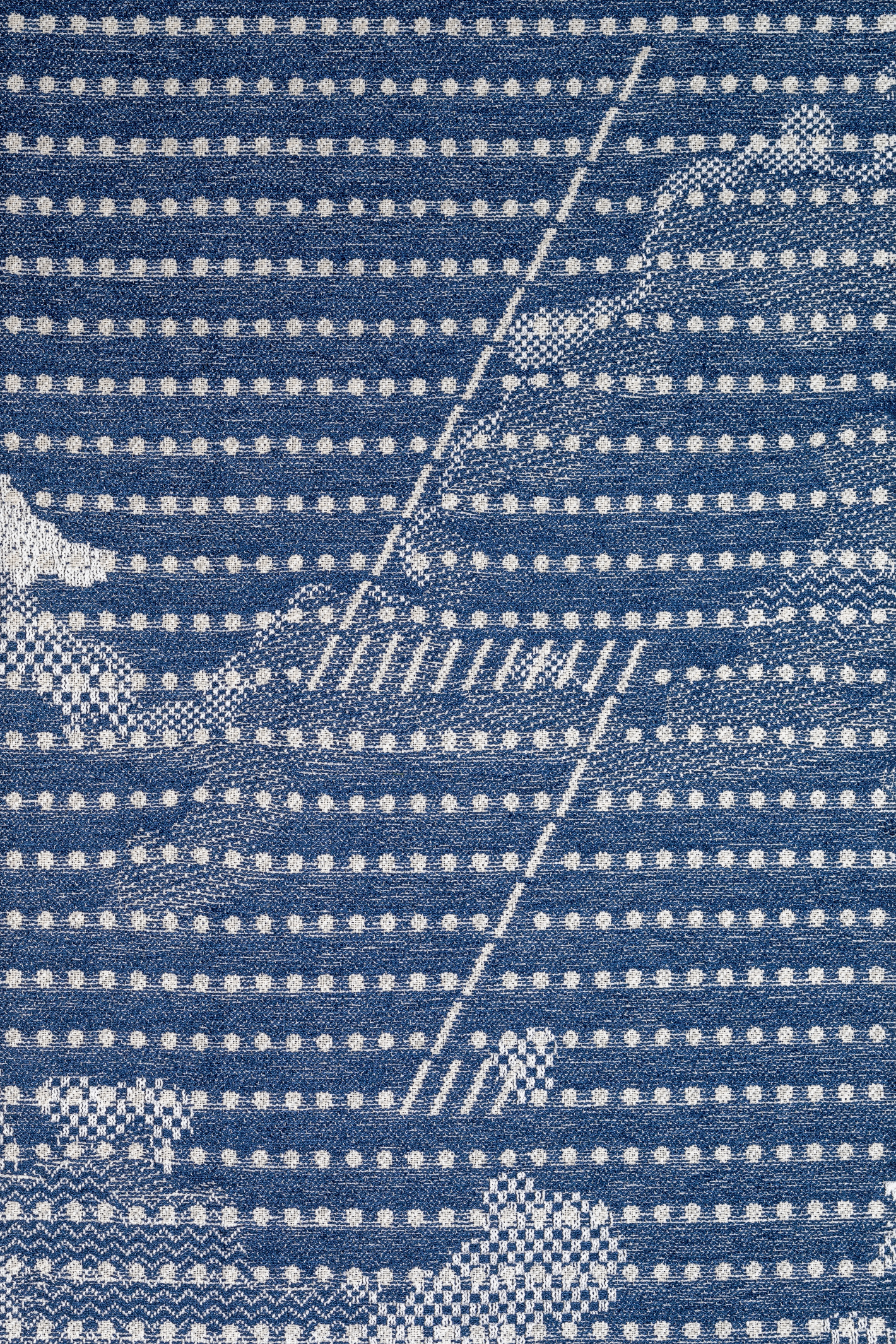
STUDIOCHARLIE 20 / 22. Esposizione antologica per i 20 anni di Studiocharlie. La mente bidimensionale di Studiocharlie, di Mario Piazza. Questo testo, oltre a presentare la prima esposizione antologica dei lavori di design dello Studiocharlie, vuole tentare di illustrare un paradosso. Vedendoli riuniti su questo tappeto di metallo industrialmente squadrettato, gli oggetti pensati e realizzati dallo studio sembrano emanare un senso di ordine che, più che nello spazio, ha una ragion d’essere nel piano. Sembrano esseri viventi di Flatlandia, la favola matematica del reverendo Edwin A. Abbott. E tutto ciò pur essendo e restando tangibili oggetti tridimensionali. Li si tocca, ci si siede, si aprono. È assurdo, al di fuori della logica. Ma l’evidenza dello sguardo sugli oggetti, meticolosamente disposti, ci guida a cercare altre ragioni, altri indizi, altre sorgenti di tutto ciò. Osservandoli con attenzione, si possono suddividere in due gruppi: quelli che potrebbero essere bidimensionali (stoffe, specchi, arazzi…), e quelli esplicitamente tridimensionali (tavoli, madie, rubinetti…). Ma la cosa che li accomuna sta forse nella loro genesi. Certo c’è un clima stilistico, un sapore di semplicità modernista, un’aura di minimalismo, di devota sottrazione. Ma sono false piste, descrizioni da riviste di lifestyle, inutili etichette. Perché nell’esserci, con un’apparente e casta presenza, veicolano un racconto di oniriche leggi. Quelle che sono nella testa tripartita dello Studiocharlie. Già il loro nome è depistante. Un anonimato distintivo, ma stigma di una mente collettiva. Per buone ragioni un altrove rispetto alle “tendenze” del compiaciuto design di oggi. Questa mente pensa e visualizza con un ferreo dispositivo di rappresentazione. Cerca esattezza, anche nell’imprevisto. Anzi, pare ami dominare il caos, senza ostacolarlo o controllarlo. Rappresentano, i Charlie, i loro oggetti progettati con uno schema, una presentazione geometricamente piana, dogmaticamente bidimensionale. È il grado zero, l’anima del progetto, ciò che consente di procedere, ovvero dar corso alla “schedatura”, la catalogazione degli oggetti come se si volessero sempre e comunque ripiegare e appiattire su se stessi. Come si fa con le camicie o le lenzuola, lo studio pensa ed è convinto che il senso dell’oggetto stia tutto nella profondità della superficie. Chissà, forse amano l’eterna musica di Morton Feldman? O forse no, manca il vagabondare estatico. Qui tutto va piegato, stirato, e riposto in dispositivi seriali, modulari, ordinatori. Come per le brave massaie, per i Charlie, l’oggetto per esistere va confezionato. È questa la matrice “grafica” del loro lavoro, un approccio alla progettazione che trae origine dalle ragioni disciplinari della grafica. Così si spiega l’importanza di alcune attenzioni percettive nella soluzione delle tematiche produttive. Dove sta, ad esempio, il focus (il cuore del progetto) del rubinetto progettato per Boffi? Certo è un oggetto di fine modulazione nelle sue forme, di attenzioni alle finiture del metallo, ma questa attenta formalizzazione è di fatto solo l’apparato scenografico, la messa in scena curata e necessaria per dar corso alla relazione gestaltica di un dispositivo eccentrico. Fa quello che non ti aspetti. La manopola non gira come solitamente fa negli altri rubinetti, la sua traiettoria distonica dà vita, riempie di senso il progetto. Lo ascrive in un’altra categoria di “cose”. Il progetto è una azione, non è tridimensionale e neppure bidimensionale, è una dichiarazione astratta, un pensiero-azione, che di certo è più facile descrivere e governare con una rappresentazione schematica. Una scrittura registica. Messa così, dentro la testa dello Studiocharlie non gira un’aspirazione minimalista, ma un sano concettualismo schematico che si relaziona con gli oggetti per agire come mente pensante. Tutti gli oggetti realizzati costituiscono un palinsesto obliquo. Non sono mero risultato di occasioni lavorative, sono differenze di generi che trovano una casa comune. Sul piano twittano fra loro, le borse altere con le spirali a frammento, il tavolone basso col fermaporta, il giunco naturale con quello metallico, le squadrettature specchianti e le gocce di Apollinaire, i pesci obesi e millepiani con le sardine in piastrella, i vasi estrusi come la pasta con il casellario melottiano, le coperte optical-emergenziali con gli accessori da scrivania in ottone e marmo zen, la cornice magrittiana con le stanze sui tappeti tessuti a Katmandu, i fermalibri dal carisma monumentale con la lampada-lancia-verso-l’infinito. Tutto ciò mentre i vasi calmi, residui di industrie marine, giocano al totocalcio con i plaid Punto Punto. Ora è chiaro che elencare genera fascino e con leggerezza disvela la complicità profonda di questi peculiari oggetti fra loro. Essi, come altri che verranno, vivono nella mente dei Charlie, nel regno immaginifico della bidimensionalità schematica ed esuberante che lascia vibrare il demone bizzarro che dovrebbe agitare ogni buon progetto di design. Non a caso, a proposito di Flatlandia, Giorgio Manganelli scriveva: “Non sappiamo dire se è un incubo, una farsa, un apologo, una satira, un jeu d’esprit, una scommessa, una allegoria, una visione, o la satira di tutte le visioni”. Per la risposta chiedere ai Charlie. /// STUDIOCHALIE 20 / 22. Retrospective exhibition of Studiocharlie’s first 20 years of activity. The Bidimensional Mind of Studiocharlie by Mario Piazza. This text, rather than simply presenting the first anthological exhibition of the designs by Studiocharlie, wishes to attempt to illustrate a paradox. When seen gathered together here on this industrially chequered metal carpet, the objects designed and created by the studio seem to emanate a sense of order, that, rather than in space, has more of a purpose in the surface itself. They seem to be living objects from Flatland, the mathematical fable by Reverend Edwin E. Abbot. And all this while both being and remaining tangible three-dimensional objects. They can be touched, sat upon, opened. Of course, it’s absurd, it’s beyond the realms of logic. But the evidence as we gaze on these meticulously arranged objects, leads us to search for other reasons, other clues, other sources. Observed carefully, the objects can be subdivided into two groups: those that could be two-dimensional (fabric, mirrors, tapestries…) and those that are explicitly three-dimensional (tables, cupboards, faucets…). But, perhaps the thing they all have in common is their genesis, their origin. Of course, there is a stylistic atmosphere, a flavour of modernist simplicity, an aura of minimalism, of devout subtraction. But all of these are red herrings, mere descriptions from lifestyle magazines, useless labels. Because in their very being, with an apparent and chaste presence, the objects convey a tale of dreamlike laws. These are the laws that are in Studiocharlie’s tripartite mind. Even their name is misleading. It’s a distinctive anonymity, but also symbolic of a collective mind. For good reason, it’s an elevated other world when compared to today’s smug design trends. This mind thinks and visualises through a rigorous set of representations. It searches for accuracy and exactness, even in the unforeseen. Indeed, it seems to love to dominate chaos, without hampering or controlling it. The Charlies represent their designed objects with an outline, a geometrically flat presentation, which is dogmatically bidimensional. It is the zero degree, the soul of the project. It is what allows you to proceed, that is to say, to carry on with the “filing”, the cataloguing of the objects as though they were always wanting to try to flatten and fold in on themselves. In the same way that it is done with shirts and bed linen, the studio thinks and is convinced that the whole sense of the object is in the depth of the surface. Who knows, maybe they love the timeless music of Morton Feldman? Or perhaps not, maybe they lack the ecstatic wandering. Here everything must be folded, ironed and placed in ordered, serial, modular devices. According to the Charlies, indeed as with good housewives of days gone by, the object must be packaged in order to exist. This is the “graphic” matrix of their work, an approach to planning that extracts its origins from the disciplinary purposes of graphic design. In this way, it explains the importance of some perceptive attention in the solution found for production issues. Where, for example, is the focus (the heart of the project) of the faucet designed for Boffi? Certainly, it is an object of refined modulation in terms of shape, with absolute attention to detail regarding the finish of the metal. But this attentive formalisation is merely theatrical apparatus, the ‘mise-en-scène’ necessarily curated in order to open up the path of the Gestalt relationship of an eccentric device. It does what is unexpected. The handle doesn’t turn as would normally happen with other taps; its dystonic trajectory gives life, fills the design with meaning. It is ascribed to a different category of “things”. The design is an action, neither three-dimensional nor even two-dimensional: it’s an abstract declaration, a thought-action which is, for certain, easier to describe and govern with a schematic representation. A directorial script. Put like this, what moves inside the mind of Studiocharlie is not a minimalist aspiration, but rather a healthy and schematic conceptualism that interacts with the objects to work as a thinking mind. All of the created objects form an oblique schedule. They are not simply the result of labour or work opportunities, but rather they are differences of genres that find a common home. On the surface, they tweet amongst each other: the haughty bags with the fragmented spirals, the large coffee table with the doorstop, the natural rattan with the metal one, the mirroring squares and Apollinaire’s cascading raindrops, the obese and multi-planes fishes with the sardines in tile, the vases extruded like dough with the Melottian filing cabinet, the optical-emergency blankets with the brass and zen marble desktop accessories, the frame, gently reminiscent of Magritte, with the rooms on carpets, woven in Katmandu, the bookends of monumental charisma with the lamp-launched-towards-infinity. All this, while the calm vases, remnants of marine industries, play the football pools with the Punto Punto blanket. Now it is clear that listing generates charm and with a lightness of touch unveils the deep complicity between these peculiar objects. These, like those that will come, live in Charlies’ mind, in the imaginative reign of schematic and exuberant bidimensionality that leaves the bizarre daemon that should agitate every single design project quivering with excitement. maybe just Returning once more to Flatland, it is not for nothing that Giorgio Manganelli wrote: “We can’t say if it’s a nightmare, a farce, an apologue, a satire, a jeu d’esprit, a bet, an allegory, a vision or the satire of all visions”. For the answer to this, ask Charlies.
ph.1 / ph.2 / ph.3 / ph.4 / ph.5 / ph.6 Giulio Boem Grazie a Torri Lana 1885 Massimo Belotti, Luca Carrara, Simone Visani e tutta la squadra Famiglia Torri Mario Piazza Adriana Albertini, Camillo Bonfanti, Emma Louise Christopherson, Enrica Cortinovis, Odàmi, Graziano UF Ortogni, Christian Pegoraro, Pietro Suardi, Vittore Tasca Atipico, Billiani 1911, Boffi, Bonacina 1889, Crea Cemento, De Padova, Design Editions, Designercarpets, Galleria Luciano Colantonio, Lanificio Leo, Lema, Made a Mano, Maru Design Gallery, Mipa, Mr.Frangi, Nemo, Torri Lana 1885, Salvatori, Up To You Anthology STUDIOCHARLIE 20 / 22 Esposizione antologica per i 20 anni di Studiocharlie, spazio esposizioni Torri Lana 1885, Gandino (BG) 30 aprile – 30 giugno 2022 ©2022 Studiocharlie STUDIOCHARLIE 20 / 22 Catalogo della mostra ©2022 Libri Aparte ISBN 978-88-95059-46-4 Copertina realizzata con l'arazzo FULMNI!, design Studiocharlie, dalla collezione Torri Lana 1885 Arazzi Connections Fotografie © Giulio Boem Composto con carattere Superbastone ©2006 Studiocharlie Stampato su carta Fedrigoni Freelife Vellum Premium White 120 gr e Materica Cobalt 120 gr da Gizeta srl, Nembro (Bg) www.torrilana.it www.libriaparte.it
ph.1 / ph.2 / ph.3 / ph.4 / ph.5 / ph.6 Giulio Boem
Thanks to
Torri Lana 1885 Massimo Belotti, Luca Carrara, Simone Visani and the whole team
Torri family
Mario Piazza
Adriana Albertini, Camillo Bonfanti, Emma Louise Christopherson, Enrica Cortinovis, Odàmi, Graziano UF Ortogni, Christian Pegoraro, Pietro Suardi, Vittore Tasca
Atipico, Billiani 1911, Boffi, Bonacina 1889, Crea Cemento, De Padova, Design Editions, Designercarpets, Galleria Luciano Colantonio, Lanificio Leo, Lema, Made a Mano, Maru Design Gallery, Mipa, Mr.Frangi, Nemo, Torri Lana 1885, Salvatori, Up To You Anthology
STUDIOCHARLIE 20 / 22
Retrospective of Studiocharlie’s first 20 years of activity,
exhibition venue Torri Lana 1885, Gandino (BG)
30 April – 30 June 2022
©2022 Studiocharlie
STUDIOCHARLIE 20 / 22
Catalogue ©2022 Libri Aparte
ISBN 978-88-95059-46-4
Cover made with the FULMINI! tapestry, design Studiocharlie, from the Torri Lana 1885 Arazzi Connections collection
Photographs © Giulio Boem
Typeface Superbastone ©2006 Studiocharlie
Printed on Fedrigoni Freelife Vellum Premium White 120 gr e Materica Cobalt 120 gr papers by Gizeta srl, Nembro (Bg)
www.torrilana.it
www.libriaparte.it